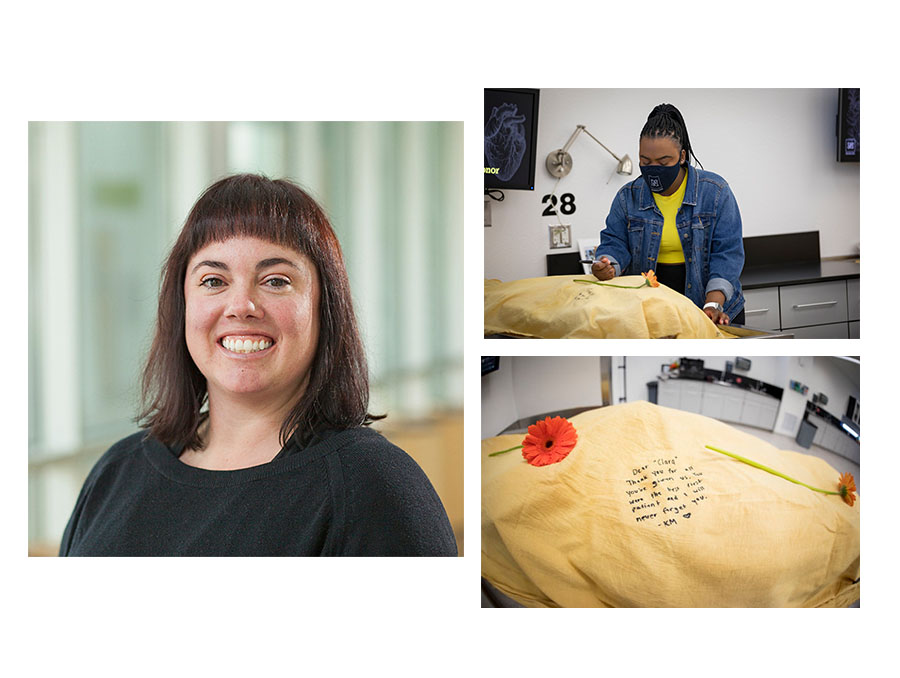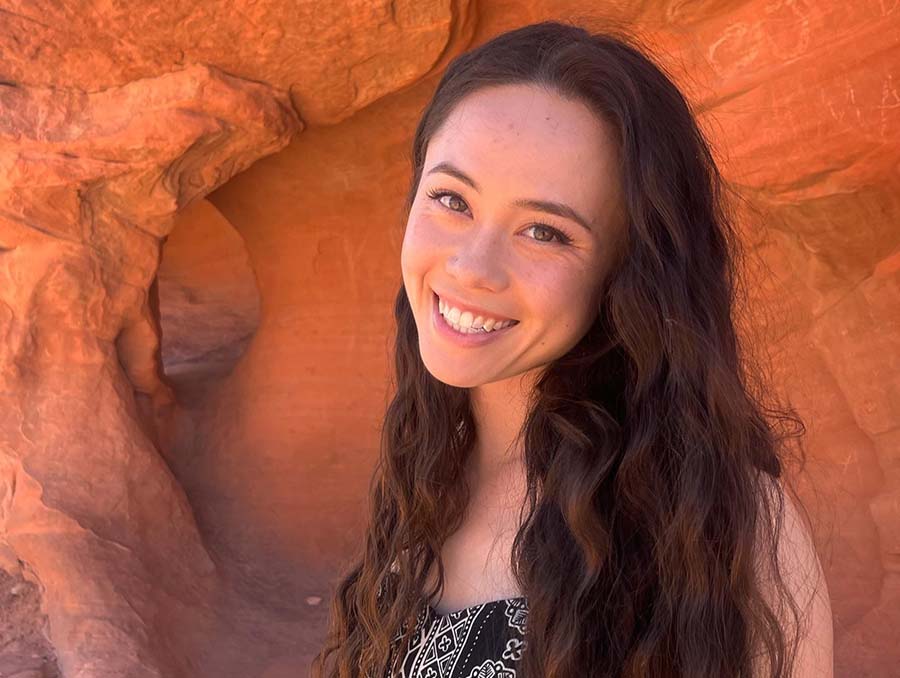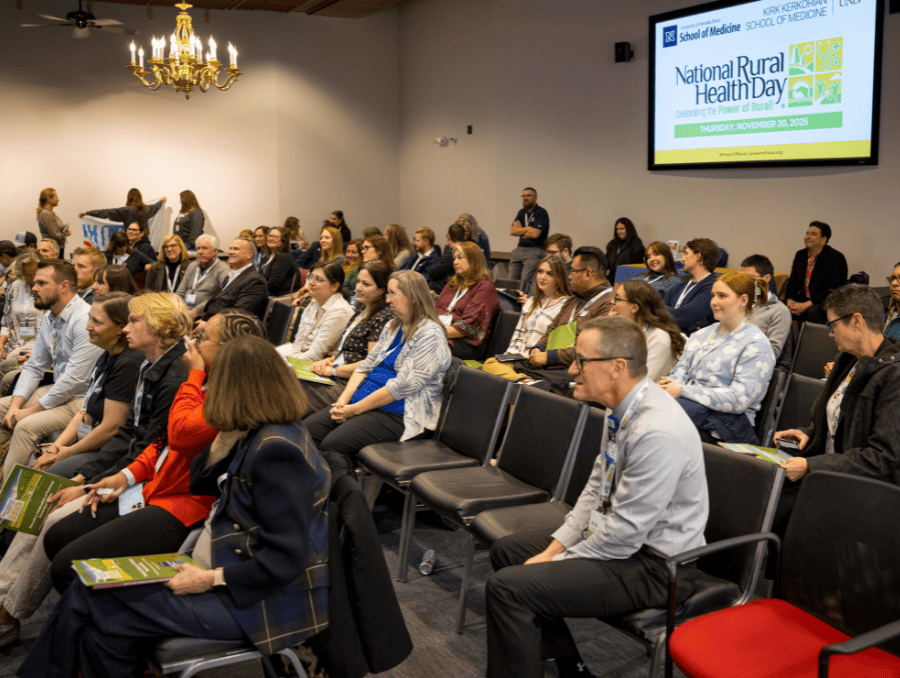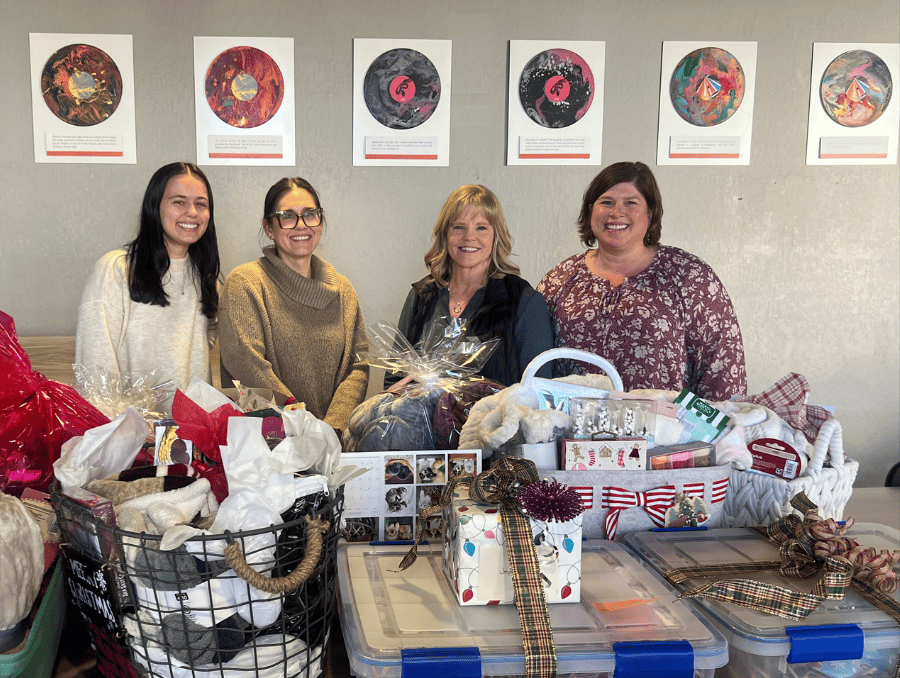For first-year UNR Med medical students, anatomy labs are conducted with an additional 40-50 honored guests in the lab. These individuals have chosen to donate their bodies after death for the purpose of cadaver dissection.
Human body teaching tools in three-dimensional physical reality are an essential part of medical education and provide medical students a unique opportunity. UNR Med is home to the state of Nevada’s only gross anatomy lab – gross anatomy being the branch of anatomy that deals with structures visible to the naked eye.
As UNR Med students advance onto years two, three and four – learning more about kidneys, lungs, hearts and systems – it is the time spent learning through the dissection of their cadavers that provides baseline medical education training and gets students thinking about caring for their future patients.
What is whole body donation?
By choosing whole body donation program, a donor agrees to give their body to medical science or research following their death. Depending on the program, the donor’s body may be used for teaching medical or health science students, for training surgeons in new procedures or for research.
The University of Nevada Reno’s Anatomical Donation Program, which is housed under the School of Medicine, has been in operation since 1987 and accepts donations from individuals across northern Nevada for anatomical research. The process comes at no cost to the donor and includes the option of cremation services.
Both doctors and students at the School of Medicine understand the importance of each donor’s decision and ensure the dignity and respect of donors and their families.
Why would someone choose to donate their body?
People choose to become anatomical donors for a variety of reasons. The most frequent reason I hear is how important it is to them that their remains benefit medical education and research. They express pleasure in knowing their donation may help a future doctor or researcher find a cure for diseases.
Donors also appreciate that their advanced planning eliminates confusion at end of life and will make a lasting difference. We also see a lot of generational donations; family members deciding to donate because their grandparents and parents did before them and they want to continue the tradition.
The gift of body donation can be a way to make an impactful difference in the lives of others. Anatomical donations enhance the medical education of future physicians on the complexity of the human anatomy and make it possible for medical researchers and educators to advance medical science. Death can transform the once living into life-giving teachers.
What’s it like for medical students to learn from donor cadavers?
Anatomical donors teach medical students about far more than gross anatomy. The process is strange and noble, clinical and deeply human. Cadavers posthumously teach medical students how to care, detach, work as a team and develop a sense of curiosity and discovery. And anatomical donors give a gift to medical students in how to navigate the emotions they’ll face when delivering bad news and putting patients through difficult experiences in order to make them well again.
Anatomical teaching by way of cadaver dissection has been around for centuries. Generations of doctors have been initiated into the medical profession by this tradition which challenges medical students to understand the internal workings of humans via the hands-on method, cutting into actual flesh. A solid understanding of human anatomy will always be necessary for mastering physiology, pathology, medicine and surgery.
While the human body is still an excellent three-dimensional model for learning how to perform safe and successful practices for preparation of professional careers, the School of Medicine’s anatomy lab also offers an Anatomage, a life-sized digital dissection table. Not meant as a substitute for, but rather a supplement to human cadavers, digital, life-size cadavers are revolutionizing anatomy in three-dimensional, high definition, with a click of a button or touch of a screen on a table that resembles an oversized tablet device mounted on a wheeled stretcher.
Is it possible to be both an organ donor AND a whole body donor?
Unfortunately the answer is mostly no, as we need our donors to be intact whole bodies for the embalming process, which is why we cannot accept donors who die from traumatic death, such as a car accident or gunshot. Medical students are learning complete anatomy, so all organs are needed for dissection, unless they had a surgical removal while they were still alive. We ask that our anatomical donors cancel their organ donation when they sign up for the program.
The one exception made is for cornea harvest/donation, which is allowed and encouraged!
What happens to the donors when the academic year comes to an end?
Each June, UNR Med first year medical students honor those who gift their bodies to the anatomical donation program with a formal memorial service to express deep gratitude and pay respects for body donations of the academic year’s donors. The event is traditionally held in person at Walton’s Funeral Home, and students invite the families and friends of their donors. You can view photos from the 2019 memorial service.
Due to the pandemic, UNR Med medical students hosted the 2020 memorial service virtually, which is available for on-demand viewing. The virtual service offers a glimpse into how impactful and meaningful anatomical donors are, to our medical students.
Due to continued pandemic restrictions, a closed event for first-year medical students called "Honor The Donor,” was held Friday, June 11 in the Anatomy Lab. Students wrote messages, left flower offerings and said final goodbyes to their donors before cremation. Donors’ loved ones were recently invited to view the completed Honor The Donor event video.
For further information on whole body donations, please contact UNR Med’s Anatomical Donation Program, (775) 784-4569 or adp@med.unr.edu.
Lindsey Pisani is the anatomy lab manager and administrator for UNR Med’s Anatomical Donation Program.
















